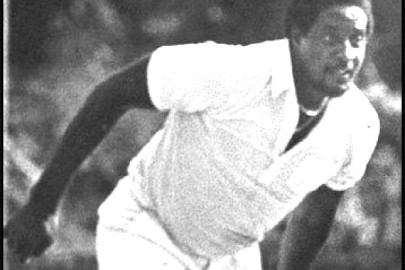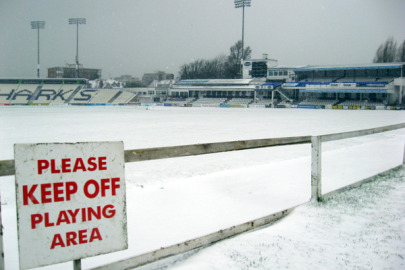Our cricket correspondent Jon Hotten reveals why magazines – and readers – are obsessed with lists…
Back in the mad, bad old days when I worked on magazines for a company that seemed invincible but no longer exists, I had a theory, probably rubbish, that most mags had a maximum of about six people at any one time that they could put on the cover and get a guaranteed sale. It was based on the notion that in any specialist area – musical genres, blockbuster movies, football – that was about the number of acts that the entire readership would have an interest in. It was a rolling cast and as some dropped out, others arrived, but six was roughly the number.
If you strayed outside of the six, you were taking a risk with a commercial property. Yet the frequency of most magazines meant there were more covers than there were guaranteed bankers to put on them without resorting to the kind of trivial repetition that you see so often now (token bitchy comment, but nonetheless true).
One way around it was to come up with a ‘list feature’ – the hundred best this, the twenty sexiest that and so on. It was particularly popular at Christmas when there was nothing else going on, and if you gave it enough of a spin, it was pretty failsafe, especially if it was compiled by some sort of reader vote on the winner.
This week has proven the concept retains its catnip qualities, with Wisden announcing an ‘All-Time Text XI’ and Patrick Ferriday publishing Masterly Batting, a book that ranks the best Test hundreds ever made.
Admit it, if you’re at all into cricket then you need to know who’s there, don’t you… I did, and there’s something about human nature that wants to see a list and then disagree with it (the first thing you learn about the list feature is that it is made to be disagreed with – it’s the only way that it will achieve any sort of traction with the reader).
The point is, it’s a trick, it’s a trap… you’re joining in a zero-sum game when you take up the argument. The Wisden All-Time Test team picks eleven from more than 2,600 people to have appeared in a Test match across 150 years of the Almanack’s life. Masterly Batting selects 100 centuries from 3,649 scored by 697 players. The mathematical chances of agreeing with them are approaching those of winning the lottery, and that’s before the emotional arena is approached.
Even the act of typing out the Test XI – Hobbs, Grace, Bradman (c), Tendulkar, Richards, Sobers, Knott (wk), Akram, Warne, Marshall, Barnes – has the fingers creeping towards other keys… (Hobbs – really? and Bradman, well he was no captain was he, and it’s great that Richards is in but for me it’s the wrong one because my love for B.A. is irrational, and does anyone still think Sobers was a better all-rounder than Kallis, and where are all the South Africans and New Zealanders and Sri Lankans, because surely Hadlee’s a good shout isn’t he and old Murali took a wicket or two, and what sort of conditions are these teams playing in anyway? Are Wisden seriously trying to contend that any judge worth their salt would pick Alan Knott over Adam Gilchrist, and as for Barnes with his dibbly dobblers on a modern track – cannon fodder, and even if he bowled on a greentop, well everyone on earth would rather face him than Thomson or Holding wouldn’t they? And who was it that left out the man who made both the highest Test and first-class scores?) and so on, ad infinitum.
In Masterly Batting, Patrick Ferriday measures each hundred in ten categories: size, percentage of team score, speed, bowlers faced, the pitch, chances offered, match impact, series impact, compatibility of attack and conditions, and finally intangibles (a get out of jail card if ever there was one), and these are worthy measures. It’s just that my favourite hundreds have little to do with any of those criteria, or at least they’re tangential and not at the core of their appeal.
Would I have enjoyed Boycott’s hundredth hundred any less if England hadn’t won (at least I think they won – it doesn’t matter now), or KP’s 158 in 2005 any more had it been less manic and flukey and chanceless? What about all of those Steve Waugh tons when I loved him and hated him at the same time, and why did I get a lump in my throat when he hit that boundary from the last ball of the day at the SCG?
And yet none of those thoughts really detract from the nature of the Test XI or the best centuries, because they brought them back to me. I felt them once again, and that’s a nice thing. In Masterly Batting, choosing the hundreds is actually secondary to the chance to write well about cricket and stand out a little on the shelves. Wisden had a couple of days’ worth of headlines and they’re always useful if the noble name is to survive and prosper for another century and a half.
But c’mon, really, did they even consider the fall-out if Bradman tried telling Grace where to stand…












It isn’t just magazines that play this game, international organizations love it too. Hardly a week goes by that we aren’t treated to a high profile list of the ten or twenty most free, uncorrupt, richest, competitive, educational, happiest, wealthiest, healthiest, cleanest, most equal, etc., etc, (choose your favourite public virtue) countries. Nobody seems to notice that for years it’s always pretty much been the same list whatever the category–the Nordics & Northern Europe, the Anglosphere and occasional anomalies like Singapore, or that the differences among them are rarely significant. Great public consternation and political fallout can attend the slighest dip in one’s national rank.
The objective versus the subjective, dry statistics or a bit of interesting background, the thing that makes accountants so boring and statisticians so dusty. The latest list is the top whatever sportsmen and women, in order of book value, cultural anthropology will be in overdrive.
Stamp me vitals, see how much that bloke Lineker trousers, I mean, Lineker for goodness sake, he comes from Leicester.
I get quite irritated when I learn that a poll somewhere has voted Eric Cantona the greatest Manchester United player ever. My usual reaction is “Bollocks! You idiots never saw Duncan Edwards, but you could have taken the trouble to read about him!” Then I reflect: we all go for those we actually saw; those of cherished memory, before we give any consideration to those our fathers and grandfathers raved about. What I really like about this post, Jon, is that you set it up beautifully with discussion on the psychology of lists then stir the cricket-loving reader into a state of fury with your seeming ‘dismissal’ of those who appear in the ‘greatest ever’ lists year after year; the most provocative example here being that of Sydney Barnes, a ‘dibbly dobbler bowler.’ In keeping with the spirit of lists, I summon here the mighty pen of John Arlott (Now where would he sit in a list of the greatest sports broadcasters?):
‘ The living legend that is Sydney Francis Barnes became ninety years old on 19 April 1963. Those who played with or against him, over a period of almost three normal cricketing lifetimes, had no doubt that he stood alone – the greatest bowler that ever lived.
More than six feet tall – he is still dominatingly erect at ninety – with high, wide, rugged shoulders, deep chest, long arms and strong legs, he was perfectly built to be a bowler. He made himself into a right-arm fast medium bowler with the accuracy, spin and resource of a slow bowler whose high delivery gave him a lift off the pitch that rapped the knuckles of the unwary and forced even the best batsmen to play him at an awkward height. He had a faster ball and a slower one, in a well concealed reserve, and the ability to bowl a yorker. He himself is content that he was essentially a spin bowler, that his movement through the air was, in modern technical language, swerve – obtained by spin – rather than swing, which derives from the ‘seam-up’ method. Certainly he made the ball move both ways through the air, and – with a first – and second finger application – he bowled the off-break and the leg-break. Indeed, he could bowl the googly at about slow-medium pace and where, in exceptional conditions, the pitch dictated it, he could be a fine slow bowler.’
Simply to see him bowl – and he was over sixty on the only occasion I ever watched him in action – was to make an instant impression of majesty, hostility and control. This was, without doubt, a born bowler, who lived to bowl. No batsman ever dared to to claim he was Barnes’s master. Asked which of them he found most difficult he answers ‘Victor Trumper’. Who next? ‘No one else ever troubled me.’ No cricketer who played with or against him has any doubt that Sydney Barnes was the greatest bowler the world has ever seen.’
As those who believe their list is the definitive list; the last word, might say: ‘Nuff said!’
John Arlott (Now where would he sit in a list of the greatest sports broadcasters?) shoulder to shoulder with Bill McLaren, head and shoulders above the rest.
I have a vision of magazine writers in their offices thinking to themselves, “I can’t believe anyone reads this bollocks,” while readers at home flicking through the mags think, “I can’t believe anyone writes this bollocks.”
I hope Mr H. wins comment of the century and a vat of whiskey…
Coincidentally, cricinfo reviewed Masterly Batting yesterday – all out war in the coments underneath… lists never fail.
http://www.espncricinfo.com/magazine/content/story/689777.html